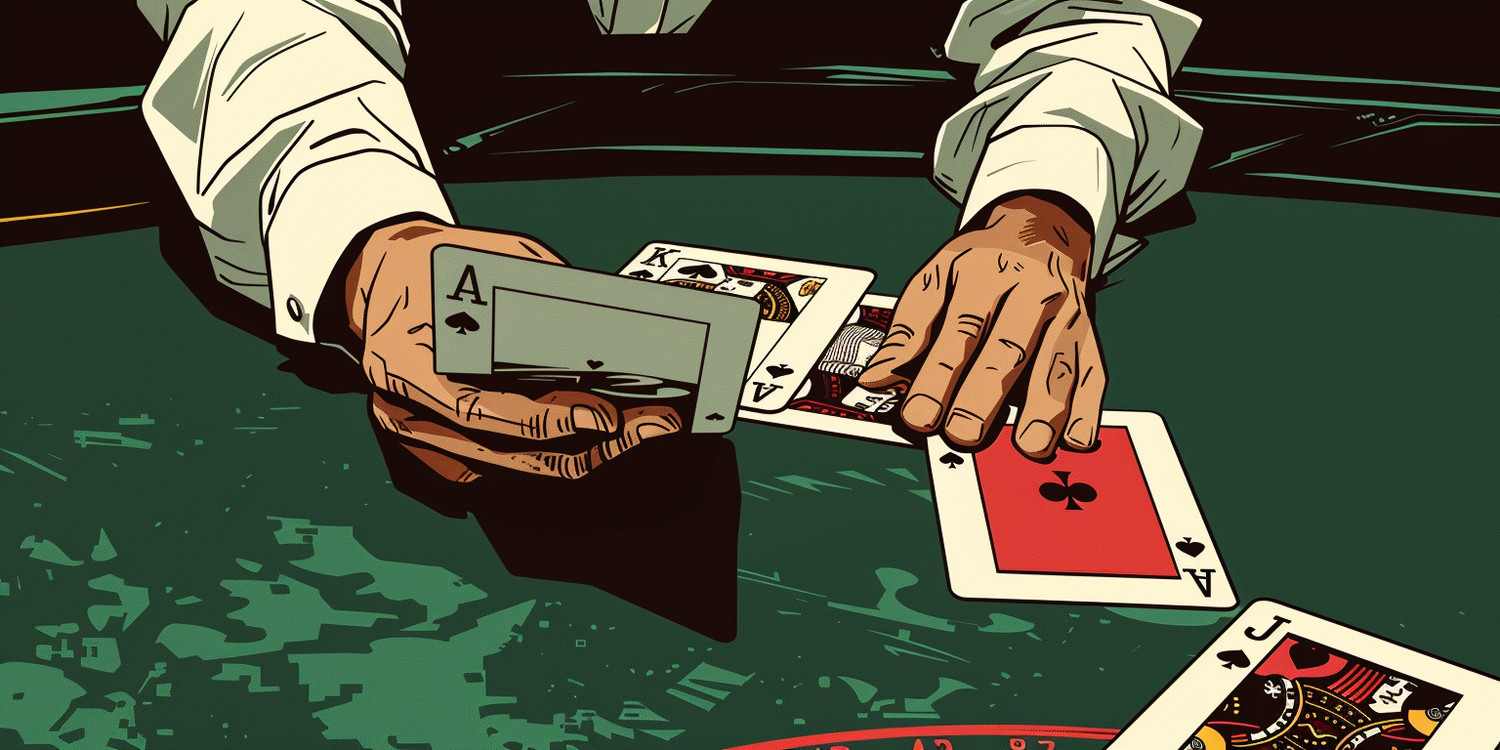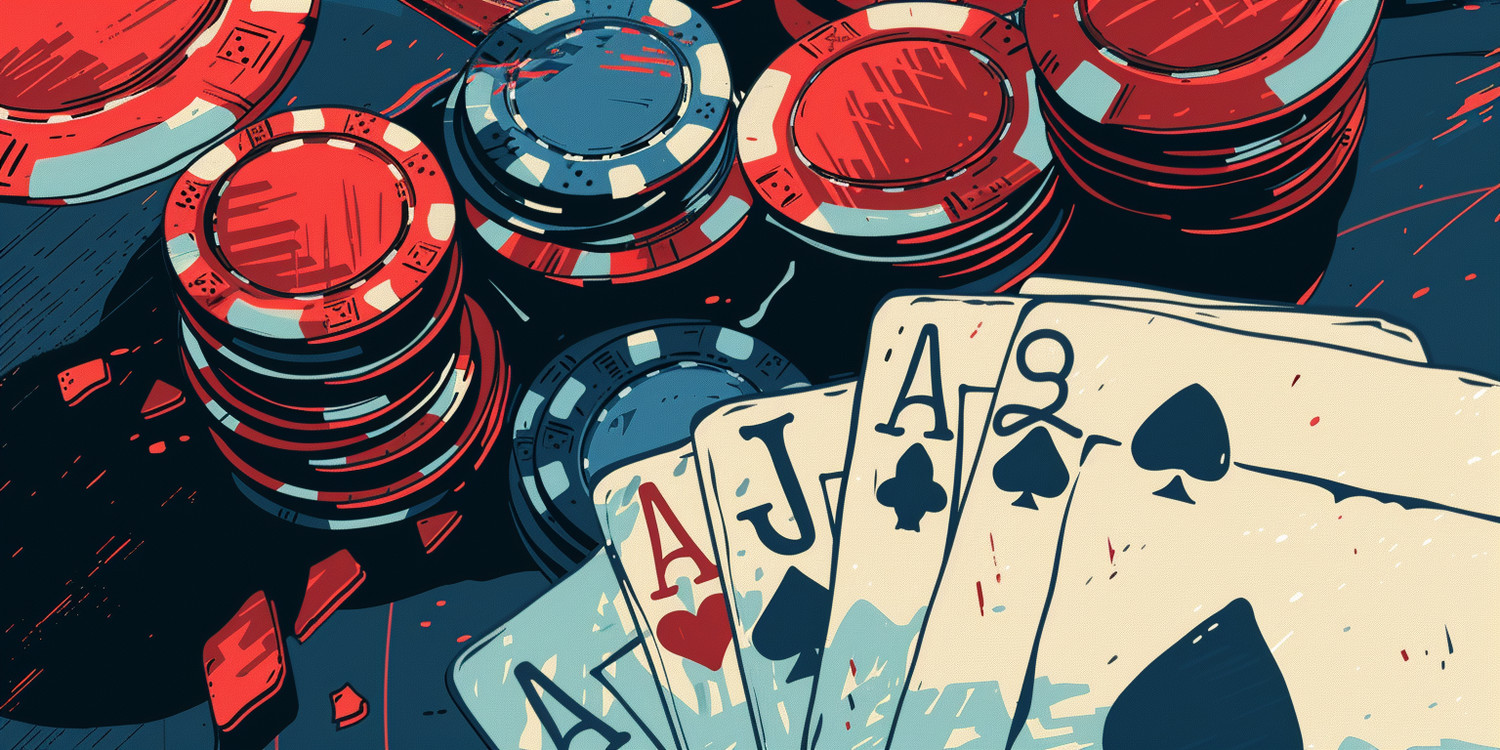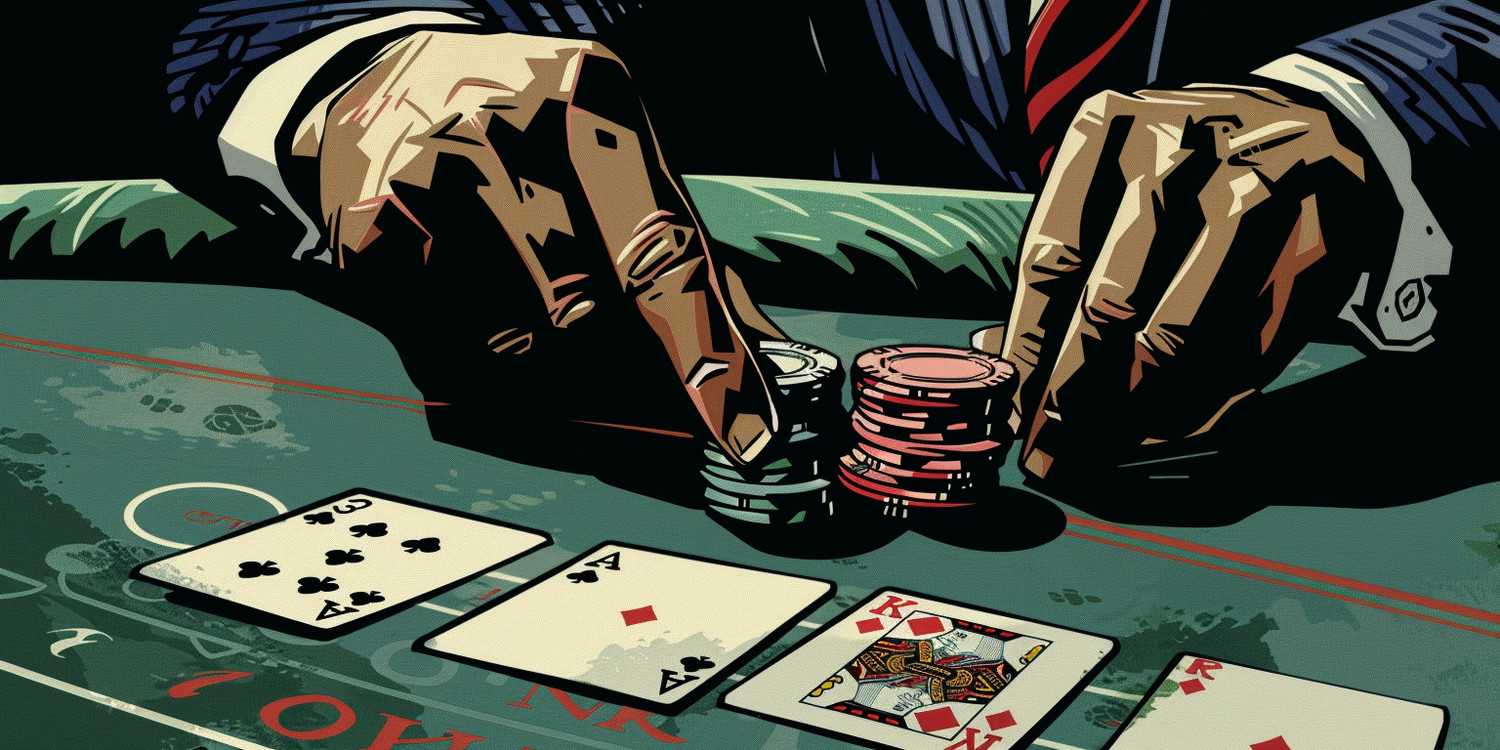
Blackjack, a card game of skill and chance, maintains its popularity through various iterations. From classic forms to modern adaptations, blackjack offers a diverse gaming experience. This exploration delves into several prominent variants found in casinos today.
Core Blackjack Rules: A Foundation for Variation
Before exploring the diverse landscape of blackjack variants, a firm understanding of the core rules is paramount. These fundamental principles serve as the bedrock upon which all variations are built, and comprehending them is essential for strategic gameplay in any format. The primary objective in standard blackjack is to acquire a hand total closer to 21 than the dealer’s hand, without exceeding 21, a condition known as “busting.”
The game commences with each player, including the dealer, receiving two cards. One of the dealer’s cards remains face down, concealed from the players, while the other is dealt face up, providing partial information about the dealer’s hand. Numbered cards (2 through 10) hold their face value, face cards (Jack, Queen, King) are valued at 10, and Aces can be counted as either 1 or 11, depending on which value benefits the hand most. A hand consisting of an Ace and a 10-value card is termed a “blackjack” and typically results in an enhanced payout for the player, often at odds of 3:2.
After the initial deal, players have several decision options. They can choose to “hit,” requesting an additional card to improve their hand total. Alternatively, they can “stand,” declining to take any further cards and finalizing their hand. Another option, “double down,” allows players to double their initial wager and receive only one additional card. This decision is typically employed when players possess a strong hand, such as a total of 11. The option to “split” becomes available when a player’s initial two cards are of equal value. Splitting creates two separate hands, each requiring an additional wager equal to the original bet. Players then play each hand independently against the dealer.
Once all players have completed their turns, the dealer reveals their face-down card. The dealer must adhere to specific rules regarding hitting and standing. Generally, the dealer is obligated to hit on any hand totaling 16 or less and stand on any hand totaling 17 or more. Some casinos may require the dealer to hit on a “soft 17,” a hand containing an Ace counted as 11. Understanding these core rules is not only essential for playing standard blackjack but also for appreciating the nuances and strategic implications of the various blackjack variants available.
American Blackjack: The Classic Standard

American Blackjack, frequently designated as “Classic Blackjack,” constitutes the most prevalent and widely recognized form of the game, serving as a foundational standard against which other variants are often compared. This iteration adheres closely to the core rules of blackjack, providing a straightforward and readily accessible gaming experience for both novice and seasoned players.
A defining characteristic of American Blackjack is the dealer’s practice of receiving two cards initially, one face up and one face down. Critically, the dealer is permitted to “peek” at their face-down card if the face-up card is an Ace or a ten-value card (10, Jack, Queen, King). This “peek” allows the dealer to ascertain immediately whether they possess a blackjack. If the dealer does indeed have a blackjack, the round concludes instantly, and players forfeit their wagers, unless they too possess a blackjack, resulting in a “push” or tie, where the player’s bet is returned.
This “peek” rule significantly influences player strategy in American Blackjack. Knowing that the dealer can potentially have a blackjack from the outset encourages players to adopt a more conservative approach, particularly when the dealer’s upcard is an Ace or a ten-value card. Players may be less inclined to hit on marginal hands, opting instead to stand and avoid the risk of busting against a dealer’s potential blackjack.
American Blackjack is typically played with multiple decks of cards, ranging from one to eight, depending on the casino’s preference. The number of decks employed can subtly impact the odds and optimal strategies. Furthermore, the rules regarding splitting and doubling down are generally standardized in American Blackjack. Players are typically permitted to split any pair of cards and double down on any initial two-card hand. These consistent rules, combined with the dealer’s “peek” provision, contribute to the distinct strategic landscape of American Blackjack, making it a classic and enduring choice for blackjack enthusiasts worldwide.
European Blackjack: Subtle Differences, Strategic Impact
European Blackjack, while sharing fundamental similarities with its American counterpart, presents key distinctions in its rules that significantly impact gameplay and strategic considerations. These subtle yet crucial variations alter the dynamics of the game, demanding a modified approach from players accustomed to the American standard.
The most notable difference lies in the dealer’s card dealing protocol. In European Blackjack, the dealer initially receives only one card face up. The second card is not dealt until all players have completed their turns. This delayed second card, often referred to as the “no-peek” rule, fundamentally changes the risk assessment for players. Unlike American Blackjack, the dealer cannot immediately check for a blackjack, meaning players must make decisions without knowing the dealer’s potential for an immediate winning hand.
This “no-peek” rule has several strategic implications. Players are generally encouraged to be more aggressive in European Blackjack, as the risk of the dealer having a hidden blackjack is mitigated. Players may be more inclined to hit on marginal hands or double down in situations where they might hesitate in American Blackjack. The absence of the dealer’s immediate blackjack check also influences the optimal strategy for splitting pairs. Players may be more willing to split pairs, even against a dealer’s strong upcard, knowing that the dealer’s hand is not yet complete.
Furthermore, European Blackjack often imposes restrictions on doubling down. Typically, players are only permitted to double down on hands totaling 9, 10, or 11. This limitation further shapes the strategic landscape, requiring players to carefully consider their doubling down opportunities. The combination of the “no-peek” rule and restricted doubling down options makes European Blackjack a distinct and challenging variant, demanding a refined understanding of probability and risk management. While the core objective remains the same – to beat the dealer’s hand without exceeding 21 – the path to achieving that objective differs significantly from the American version.
Spanish 21: A Variation with Enhanced Player Options

Spanish 21 represents a compelling deviation from traditional blackjack, distinguished by its removal of all ten-value cards from the deck and the introduction of a plethora of enhanced player options. This seemingly disadvantageous alteration – the absence of tens – is counterbalanced by a range of favorable rules designed to compensate players and inject a heightened level of strategic complexity into the game.
The most immediate and obvious difference in Spanish 21 is the utilization of Spanish decks, which are standard decks with the four ten-value cards (10s) removed, leaving only 48 cards per deck. This reduction in the number of ten-value cards significantly alters the probabilities, making it more challenging for players to achieve a natural blackjack. To offset this disadvantage, Spanish 21 offers a suite of advantageous rules.
One prominent player advantage is the ability to double down on any number of cards, not just on the initial two. This provides players with greater flexibility and control over their wagers, allowing them to capitalize on favorable situations as they arise. Furthermore, players can re-double, meaning they can double their bet again after doubling down initially. This option further amplifies the potential for maximizing profits on strong hands.
Another key advantage is the player’s ability to surrender late, even after doubling down. This “double down rescue” rule allows players to recoup a portion of their wager if they find themselves in an unfavorable situation after doubling down. Additionally, Spanish 21 typically features bonus payouts for specific hands, such as a five-card 21, a six-card 21, or a seven-card 21. These bonus payouts provide an added incentive to pursue longer hands and reward skillful play.
Despite the absence of tens in the deck, Spanish 21’s enhanced player options and bonus payouts create a dynamic and engaging gaming experience. The strategic landscape is significantly altered, requiring players to adapt their approach and capitalize on the unique opportunities presented by this variation. The ability to double down on any number of cards, re-double, surrender late, and earn bonus payouts makes Spanish 21 a popular choice for players seeking a more interactive and potentially rewarding blackjack experience.
Blackjack Switch: A Modern Twist with Strategic Depth
Blackjack Switch represents a contemporary and innovative adaptation of the classic game, introducing a unique element that fundamentally alters strategic considerations: the ability for players to switch the top cards of two separate hands. This seemingly simple modification injects a considerable degree of complexity and control into the game, demanding a sophisticated understanding of probability and hand evaluation.
In Blackjack Switch, players are required to make two equal bets and are dealt two separate hands. The defining feature of this variant is the option to exchange the top card of each hand, potentially creating more favorable combinations. This switching capability provides players with an unprecedented level of agency, allowing them to mitigate unfavorable starting hands and optimize their chances of success.
The strategic implications of the switch option are profound. Players must carefully analyze the potential outcomes of switching cards, considering the impact on both hands. A seemingly weak hand can be transformed into a strong contender with a well-executed switch, while a promising hand can be strategically sacrificed to improve the overall position. The decision to switch or not to switch becomes a crucial element of gameplay, requiring a keen understanding of card values and probabilities.
To balance the advantage conferred by the switch option, Blackjack Switch typically incorporates a rule that a dealer’s total of 22 is considered a push against any non-blackjack hand. This rule adds another layer of complexity to the game, as players must account for the possibility of the dealer achieving a 22, which negates any potential winnings unless the player holds a natural blackjack. Furthermore, a dealer blackjack typically only pays even money, rather than the standard 3:2, further mitigating the player’s advantage.
Blackjack Switch offers a compelling blend of traditional blackjack principles and innovative gameplay mechanics. The ability to switch cards provides players with a unique opportunity to exercise control over their destiny, while the push on 22 rule and reduced blackjack payout introduce countervailing forces that maintain a balanced and engaging gaming experience. This modern twist on a classic game appeals to players seeking a more interactive and strategically demanding form of blackjack.
Pontoon: A British Blackjack Variant with Unique Terminology

Pontoon, a blackjack variant popular primarily in Britain and Australia, presents a distinct and engaging twist on the classic game, characterized by its unique terminology and subtle rule modifications. While the core objective of reaching 21 remains the same, Pontoon introduces a fresh perspective and a set of strategic considerations that differentiate it from its more widely known counterparts.
One of the most immediately noticeable differences in Pontoon is the specialized vocabulary. A “blackjack” is referred to as a “Pontoon,” and a “hit” is called a “twist.” The dealer is typically referred to as the “banker.” These linguistic distinctions contribute to the unique atmosphere of the game and set it apart from standard blackjack.
Beyond the terminology, Pontoon features several rule variations that impact gameplay. The dealer, or banker, typically conceals both of their initial cards, adding an element of uncertainty for the players. This “no-peek” rule, similar to European Blackjack, encourages players to adopt a more aggressive strategy, as they cannot assess the banker’s potential for an immediate winning hand.
Another key difference lies in the payout structure. A Pontoon (blackjack) typically pays out at odds of 2:1, a more generous payout than the standard 3:2 offered in many blackjack variations. However, this increased payout is often balanced by stricter rules regarding ties. In most Pontoon variations, the banker wins all ties, giving them a slight advantage.
Furthermore, Pontoon often features restrictions on when players can stand. Players are typically required to twist (hit) on any hand totaling 16 or less and can only stand on a hand totaling 17 or more. This mandatory twisting rule forces players to take risks and potentially bust, adding a layer of tension to the game.
Pontoon offers a compelling alternative to traditional blackjack, with its unique terminology, concealed dealer cards, enhanced Pontoon payout, and mandatory twisting rules. These subtle yet significant variations create a distinct strategic landscape, demanding a refined understanding of probability and risk assessment. For players seeking a fresh and engaging blackjack experience, Pontoon provides a rewarding and challenging option.
Free Bet Blackjack: Opportunities and Considerations
Free Bet Blackjack presents an enticing proposition to players, offering the opportunity to double down or split certain hands without risking additional capital. This innovative feature injects a unique dynamic into the game, creating exciting possibilities for maximizing winnings, while also demanding careful consideration of the associated rules and limitations.
The core concept of Free Bet Blackjack revolves around the “free bet” option, which allows players to double down or split specific hands without placing an additional wager. When a player is eligible for a free double down or split, a special marker is placed next to their bet, indicating that the action is being taken without any further financial risk. This feature can be particularly appealing to players seeking to capitalize on advantageous situations without increasing their exposure.
However, the availability of free bets is typically restricted to certain hand combinations. Generally, players can free double down on hard totals of 9, 10, or 11. Free splits are usually permitted on all pairs except for pairs of ten-value cards. These restrictions are designed to balance the advantage conferred by the free bet option and maintain a reasonable house edge.
To further offset the free bet advantage, Free Bet Blackjack often incorporates a rule that a dealer’s total of 22 results in a push against all non-blackjack hands. This rule, similar to Blackjack Switch, adds another layer of complexity to the game, as players must account for the possibility of the dealer achieving a 22, which negates any potential winnings unless the player holds a natural blackjack. This push on 22 rule significantly impacts optimal strategy, requiring players to adjust their decisions based on the likelihood of the dealer reaching that total.
Free Bet Blackjack offers a compelling blend of traditional blackjack principles and innovative gameplay mechanics. The opportunity to double down or split without risking additional funds creates exciting possibilities for maximizing winnings, while the restrictions on free bet eligibility and the push on 22 rule introduce countervailing forces that maintain a balanced and engaging gaming experience. Players must carefully weigh the opportunities and considerations presented by this variation to develop an effective strategy and maximize their chances of success.

